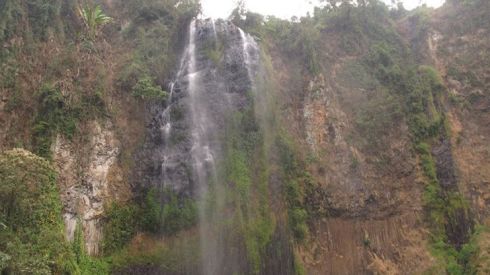Two years. Two very long, very short years. Two years of what the hell? yes, I’ll eat that, don’t you dare, oh shit, this is fantastic, can I hold that baby? no I don’t want your baby, just 1 spoonful of sugar, you want more injera? No, that chicken won’t give you HIV, what are you doing here? are you Israeli? you are fat, you have good Amharic, you disappeared!, how much? no contract please, this is a work phone, did I get a package? I’m proud, I’m so frustrated, was that a gunshot or a car? that’s my window seat lady! WOW! and I think I need a nap.
So what did I do over two years? Now that I’m coming to the end of my time I finally sat down and looked at every project, mentorship, relationship and “program” I did. But how do you measure two years? In daylight? In sunsets? In midnights? In cups of coffee? (Yes, Rent, that last one would probably work for Ethiopia). Well, here is my last two years – by the numbers:
I worked with 1308 beneficiaries and service providers, four organizations (3 NGO, 1 government), two educational institutions (University and Teacher’s College), trained 230 Peace Corps volunteers, and wrote a Master’s Thesis.
Here’s a short breakdown:
HIV- Reached 244 students with prevention programs such as Grassroot Soccer (4 interventions) and ARC awareness programs. Trained 12 HIV + women in income generation activities such as soap making and product marketing. Many of my nutrition programs also covered Orphans and Vulnerable Children and HIV+ beneficiaries.
Malaria – Reached 555 students with bed net demonstrations, 86 girls and 91 boys with targeted malaria behavior change communication (C-Change materials) and trained 230 volunteers in malaria work (bed net transformation, Audacity software, and malaria science). Served as Amhara Regional Stomp Out Malaria Coordinator.
Nutrition – Set up daily meal programs for 26 adults and 10 children through a soup kitchen and day care.
WASH- Trained 13 service providers working with school aged youth on WASH practices and youth-oriented trainings.
Gender Empowerment – Reached 170 women, 40 men in targeted interventions including Camps, Clubs, University lectures, and higher education women’s leadership programs.
English Language Improvement – Mentored 10 boys and 22 women in English improvement through clubs and newspaper editing.
Organizational Capacity Building – Worked with three non-governmental organizations and one government organization on topics such as project design and management, monitoring and evaluation, communications, fundraising (including grant writing), and marketing.
Communications and Videography – Produced three videos for NGO use, and produced other communications for a this blog.
Over two years in Gondar, I was able to attend two Timket ceremonies, one Meskel ceremony, countless coffee ceremonies, family events, and celebrations. I was a bridesmaid and witness for my sitemate’s betrothal to her local fiancé. I summited Ras Dashen, the highest peak in Ethiopia and introduced my visiting family and friends to the ancient wonders of Lalibela and the source of the Nile. I heard the stories of HIV positive friends, mentally and physically disabled, and the elderly. I had challenging conversations with local doctors and university professors, hung out with street children and got doro wot stains on every piece of clothing.
So that’s two years. That’s what I did. But no amount of numbers or anecdotes or photos can really express the amount of change I have seen in myself, and the community around me. No number of blog posts, emails, or phone calls can really show the amount of beauty and despair I have witnessed living here. So I am finishing. I am coming home. Some in my group left early. Some are staying longer. But I feel finished. I feel I have done what I came to do, and it’s time to move on. I may come back to Ethiopia one day (it is a magnet for those of us working in International Development), but I will come back older, wiser, and for some different purpose. A big part of my job over these past two years was simply living here. Sharing my culture, my thoughts, and learning and sharing back home the culture and thoughts of Ethiopians.
I may come back for work, but I will probably never again experience the intense immersion of the past two years of Peace Corps. It is a unique job. It is about serving others, but it also about sharing experiences. Living in the community, at the level of the community, with and among and integrated with the community. I knew what I signed up for. And I had no idea what I signed up for.
Would I go back in time and apply again? Absolutely. Will I do this again in the future? Probably not. Though Peace Corps Response does look tempting for when I get wanderlust again in 10 years. But I probably won’t sign up for a full 27 month commitment again. This is, as they say, the toughest job you’ll ever love.





































































































































































